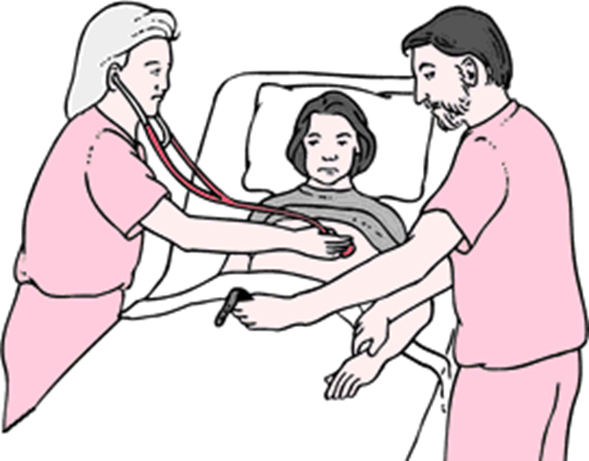A nurse is assessing a client's understanding of a surgical procedure prior to witnessing their signature on the informed consent form. The nurse determines that the client does not understand what the procedure will involve. Which of the following actions should the nurse take?
Provide teaching about the surgical procedure for the client.
Instruct the client's spouse to sign the consent form.
Read the consent form to the client using words the client will understand.
Contact the provider who will be performing the procedure.
The Correct Answer is D
Answer: D. Contact the provider who will be performing the procedure.
Rationale:
A) Provide teaching about the surgical procedure for the client:
While nurses play an essential role in patient education, it is the responsibility of the healthcare provider performing the procedure to ensure the patient fully understands the details, risks, and benefits. Nurses can clarify information but should not provide the initial comprehensive explanation of the procedure.
B) Instruct the client's spouse to sign the consent form:
The client is the one who needs to provide informed consent, not the spouse, unless the client is legally unable to do so. In such cases, legal documentation, such as a power of attorney, is required. Instructing the spouse to sign without proper authorization is inappropriate and potentially legally problematic.
C) Read the consent form to the client using words the client will understand:
While simplifying the language of the consent form can help, it is not sufficient if the client does not fully understand the procedure. Full understanding requires a detailed discussion about the procedure, risks, benefits, and alternatives, which should be done by the provider performing the procedure.
D) Contact the provider who will be performing the procedure:
The provider performing the procedure has the responsibility to ensure the client understands all aspects of the surgery. Contacting the provider to provide a thorough explanation ensures that the client receives accurate and complete information, allowing for truly informed consent.
Nursing Test Bank
Naxlex Comprehensive Predictor Exams
Related Questions
Correct Answer is D
Explanation
Choice A rationale:
Allergy to eggs is not a contraindication for taking chondroitin with glucosamine. These supplements do not contain eggs and are generally safe for individuals with egg allergies.
Choice B rationale:
Hypotension is not directly related to the use of chondroitin with glucosamine. These supplements are not known to cause significant changes in blood pressure.
Choice C rationale:
History of hypoglycemia is not a specific concern with chondroitin and glucosamine supplements. These supplements do not significantly impact blood sugar levels in people without diabetes.
Choice D rationale:
The correct choice. The nurse should instruct the client to use chondroitin with glucosamine with caution if they are on anticoagulant therapy. Chondroitin and glucosamine may have mild anticoagulant effects, and when combined with prescribed anticoagulant medications, there is a potential risk of increased bleeding or altered blood clotting times. It is essential to monitor the client's coagulation parameters closely if they decide to use these supplements.
Correct Answer is B
Explanation
Choice A rationale:
A capillary refill of less than 1 second is a normal finding and indicates adequate peripheral perfusion. It is not a cause for concern in this postoperative client.
Choice B rationale:

The presence of a pulse deficit should be reported to the provider because it suggests a discrepancy between the apical and radial pulses, indicating potential cardiovascular compromise or inadequate arterial perfusion.
Choice C rationale:
A systolic blood pressure 10 points lower than before surgery can be a normal response to anesthesia or surgery and may not necessarily require immediate reporting unless accompanied by other concerning symptoms or vital sign abnormalities.
Choice D rationale:
Pulse oximetry at 96% is within the normal range for oxygen saturation and does not warrant immediate reporting. However, if the client is experiencing respiratory distress or other concerning symptoms, it should be addressed promptly.
Whether you are a student looking to ace your exams or a practicing nurse seeking to enhance your expertise , our nursing education contents will empower you with the confidence and competence to make a difference in the lives of patients and become a respected leader in the healthcare field.
Visit Naxlex, invest in your future and unlock endless possibilities with our unparalleled nursing education contents today
Report Wrong Answer on the Current Question
Do you disagree with the answer? If yes, what is your expected answer? Explain.
Kindly be descriptive with the issue you are facing.
